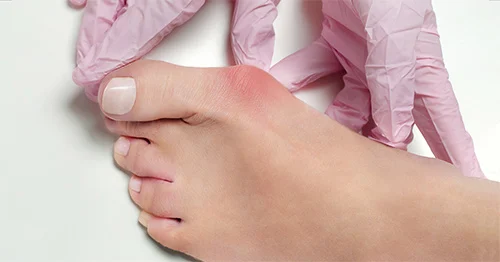Bunion surgery is a medical procedure performed to correct bunions, which are deformities at the base of the big toe. It involves realigning the bones, tendons, and ligaments to relieve pain and restore proper foot function. The surgery aims to reduce the visible bump caused by bunions and improve overall foot alignment. By addressing the structural issues, bunion surgery can help patients regain comfort and mobility.
Common Bunion Symptoms
Bunions often begin without pain but tend to worsen gradually as time passes and pressure increases on the joint. Typical symptoms include swelling, redness, and tenderness around the big toe joint, which can make walking uncomfortable. Some people develop thickened skin or irritation where the bunion rubs against their shoes, increasing discomfort. If left untreated, severe misalignment can reduce foot function and lead to significant pain during everyday activities.
As the bunion progresses, daily tasks such as standing or walking may become more difficult due to joint deformity and inflammation. The pressure and irritation can cause persistent soreness and limit mobility over time. Many individuals notice changes in foot shape, which may affect their balance and overall comfort.
When Surgery Becomes Necessary
Non-surgical treatments for bunions typically begin by wearing wider shoes or using padding to reduce pressure and discomfort. These methods aim to relieve pain and improve foot function without the need for invasive procedures. When these conservative measures fail to provide lasting relief, surgery may become necessary to address the underlying problem. The decision to pursue surgery depends on the severity of symptoms and how much they interfere with daily activities.
Surgery focuses on realigning the bones and joints to correct deformity and alleviate pain caused by the bunion. Your doctor will carefully evaluate your condition, overall health, and lifestyle before recommending this option. This personalized approach helps ensure that surgery is the best choice for long-term improvement and quality of life. Working closely with your healthcare provider allows you to make an informed decision that meets your individual needs.
What Happens During Surgery
Bunion surgery is typically performed on an outpatient basis, allowing patients to return home the same day after the procedure. During surgery, the surgeon removes the bony bump and carefully realigns the bones in your foot to restore proper function. The recovery period varies widely and can last from several weeks to a few months, depending on the surgery type and your overall health. Most patients benefit from physical therapy, which helps rebuild strength and improve mobility in the affected foot.
Following surgery, follow your doctor’s instructions to promote healing and reduce complications. Physical therapy plays a key role in regaining a full range of motion and preventing stiffness after the procedure. Patience and consistency during recovery support a smoother healing process and better long-term outcomes. Your healthcare team will guide you every step of the way to ensure optimal results.
Take Control of Your Bunions Today
Surgery can provide relief for those experiencing chronic pain or limited foot function that disrupts daily life. Discuss your medical history and concerns openly with your doctor before making a decision. Be sure to ask about recovery time, necessary footwear adjustments, and the long-term outcomes you can expect. Reach out to your healthcare team to help you choose the best treatment plan for your needs.
- crypto30x com zeus Review: Is It the Best Platform for U.S. Crypto Traders in 2025?
- Super Scatter Juara100.org Medal: The Ultimate Guide to Winning Big in Online Gaming
- Ziuqyazhmizz: Ancient Slavic Practice Explained – Meaning, Benefits & Daily Life Guide
- Zaxtexporoz: A Simple Guide to Xcer Tools, Digital Trends, and Smart Solutions
- Casîo: A Symbol of Innovation, Durability, and Global Trust




